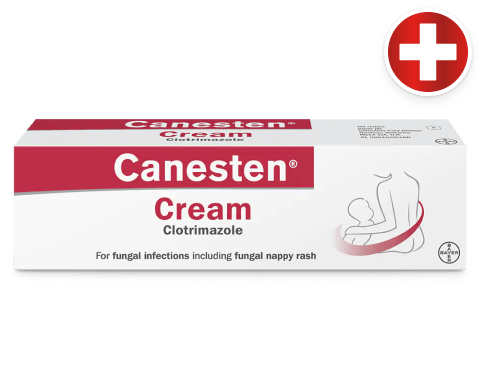Regularly allow your baby to move around without a nappy on for as long as possible.
Nappy rash

Fungal nappy rash symptoms
Your baby might be suffering from fungal nappy rash if you notice:
- Severe, bright red elevated patches with fine peripheral scale in the nappy region, especially in the skin folds around the groin and tops of the thighs
- Vesicles (small, raised cysts or fluid-filled blisters) and pustules around the rash
- The rash lasts three days or more, despite home treatments
See your doctor if:
- Your baby's nappy rash does not clear up.
- It worsens, or if the symptoms suggest the rash is a candidal nappy rash.
- Your baby has a fever or severe inflammation. You should visit your doctor to get advice on the best treatment.

Fungal nappy rash treatment
Fungal nappy rash is an infection that can be treated with an anti-fungal product, such as an anti-fungal nappy rash cream.
If your baby has inflamed candidal nappy rash, your doctor may advise you to use a combined anti-inflammatory and anti-fungal nappy rash cream, with a follow-on anti-fungal treatment.
Once the infection has cleared, barrier ointments such as Bepanthen can protect from the causes of nappy rash.
Bepanthen seals in the natural moisture on your baby’s skin by forming a transparent layer, which protects even the most delicate skin from irritants. It also contains pro-vitamin B5 to gently aid natural skin recovery.
If you would like advice on how to protect your baby’s skin from the cause of nappy rash, visit the Bepanthen website here.
Canesten fungal nappy rash treatment
Canesten® cream has been used to treat fungal nappy rash for 25 years. The active ingredient clotrimazole treats the fungal infection directly and helps relieve fungal nappy rash symptoms.
Once the infection has cleared, barrier ointments such as Bepanthen can protect from the causes of nappy rash and help to prevent a recurrence.



